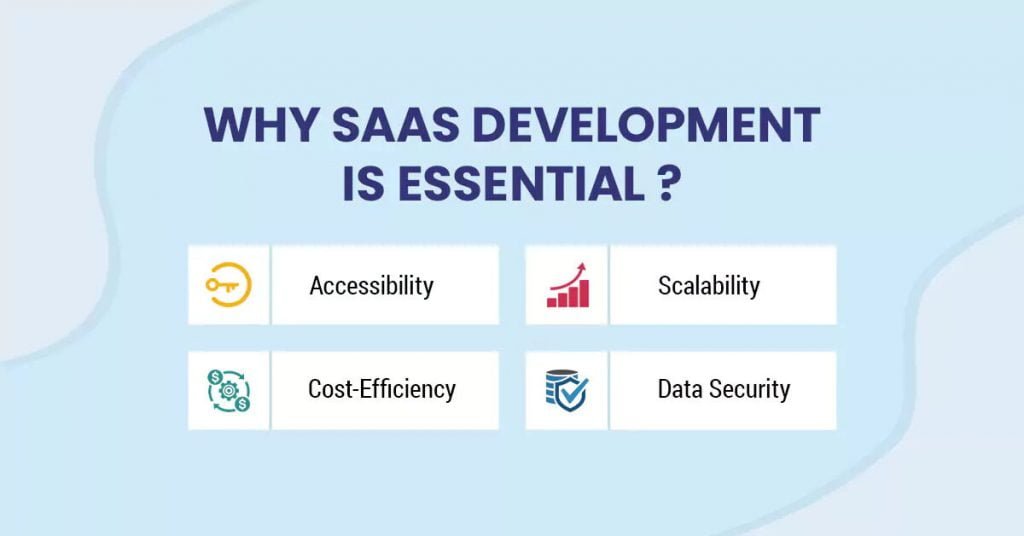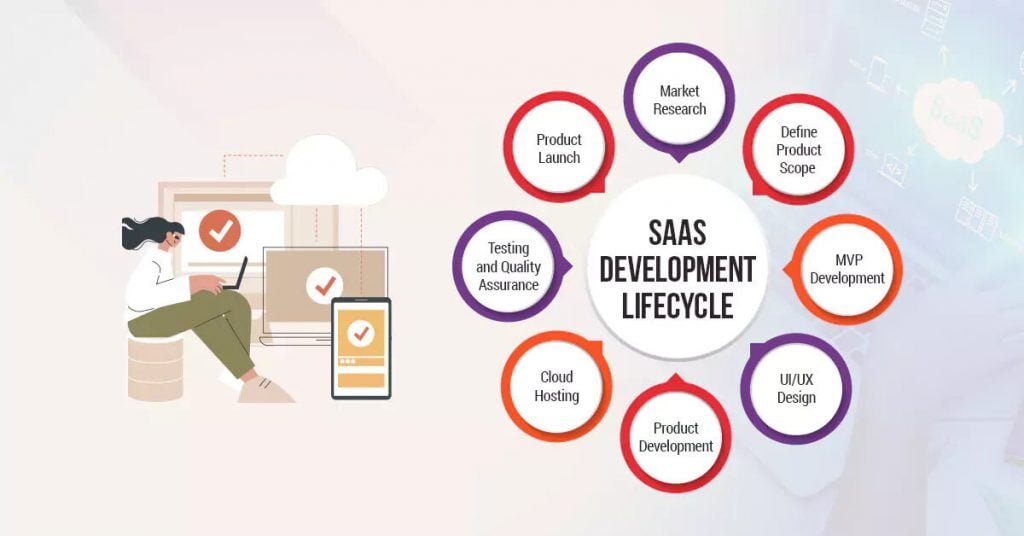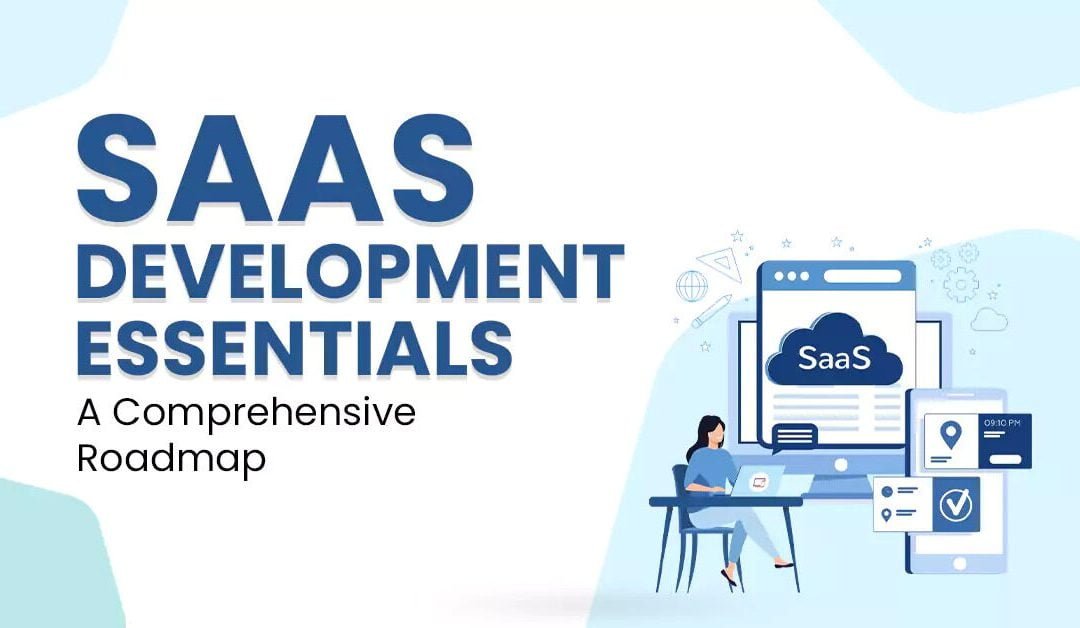Nearly 85% of business apps across different sectors will be SaaS-based by 2025, according to the 2020 State of SaaSOps survey by BetterCloud. In another study, BetterCloud found that SaaS-powered workplaces were 30% more productive and efficient in 2022.
The above findings offer two takeaways. First, the SaaS revolution is a reality. In today’s fast-paced and competitive business landscape, SaaS applications have emerged as the real game changers. Companies of all sizes are moving towards SaaS development to streamline their operations and stay ahead of their competitors. The global SaaS user spending is expected to reach $232 billion by 2024.
Secondly, SaaS development will play a pivotal role in organizational growth and development. At a time when every organization is striving to stay on top of the technology trends, SaaS opens up a new world of endless growth opportunities and possibilities.
Let’s dive into the massive world of SaaS development to understand the key components of this holistic approach. We’ll also discuss ways businesses can leverage SaaS applications to achieve long-term sustainability in this comprehensive guide.
Understanding the Term SaaS
Software-as-a-Service (SaaS) is a cloud-based software delivery model. It allows users to access their desired digital solutions or features on a subscription basis; they pay a monthly/yearly fee for the offered functionality.
To better understand the concept of SaaS, imagine working as a manager of a mid-sized IT company. You store confidential data about your employees, clients, and projects on the local server. As long as you are present in your office, you, or anyone with access to your computer, can manage that data anytime.
However, once you are out of your office, your access to that data is restricted. Say for example you want to see the planned schedule of a project while meeting with the client. You can’t see it because the server is not connected to the internet. Moreover, data is highly confidential; hence, you cannot copy it to any other device.
Here comes a cloud-based solution or SaaS. With a SaaS application installed on your device, you get uninterrupted access to your desired functionality. Now, you can store your sensitive data in a SaaS-based system and access that information anytime, anywhere. Plus, there is no storage limit. You can extend the storage capacity as your organizational needs grow.
What is SaaS Development?
SaaS development refers to the process of building cloud-based solutions. It involves research, MVP development, UI/UX design, software development, and testing and deployment. The agile approach best defines the SaaS development lifecycle to optimize user experiences.
The creation of SaaS applications has seen a massive shift in terms of technologies and features. Today, user feedback has become central to decision-making. SaaS companies first analyze their user preferences and spend ample time on competitor analysis. From online surveys to testing, all methods are used to collect feedback and make necessary adjustments.
Moreover, the rise of artificial intelligence has also transformed SaaS development practices. To make things easier and more convenient for users, SaaS developers are now integrating AI technology into their cloud-based solutions. These integrations offer unique functionalities and significantly improve the system’s performance.
Why is SaaS Development Essential?

Four qualities make SaaS applications unique. These include accessibility, scalability, cost-efficiency, and data security. Let’s discuss these qualities one by one:
1. Accessibility
SaaS development has the biggest impact on user experience. Accessibility differentiates cloud-based software from traditional ones. With SaaS applications, users are not bound to use the same device at a fixed location. Cloud hosting makes these tools accessible from any device connected to the internet.
As a result, companies of all sizes now prefer SaaS applications because they promote teamwork and collaboration, especially for remote work. SaaS development, therefore, becomes a necessity to grow in today’s digital era.
2. Scalability
As your business expands, your organizational needs also grow. Managing a company with less than 50 employees is different from one with a 500+ workforce. Hence, employers need to scale their software systems to maintain performance and deliver desired results.
The second benefit of SaaS applications is that they can be scaled to meet growing business requirements. Users can upgrade their subscriptions without buying new software to access advanced features and functionalities.
3. Cost-efficiency
Traditional software is always expensive. You need qualified resources to maintain these applications. On-premises servers also require extreme care and regular upgradation for consistent performance. Eventually, the overall cost of tools hosted on the local server is higher than that of cloud-based solutions.
Therefore, SaaS is always a cost-effective option. Companies need not spend much on developing software to meet their organizational needs. Instead, they can buy cloud-based software from SaaS development companies.
Likewise, there is no need for maintenance, expensive staff training, or updates. Your SaaS partner can take care of all these things.
4. Data Security
Data stored on local devices is highly susceptible to physical damage or tempering. Anyone with access to your device can delete, modify, or copy sensitive data without your consent. Even storage failure can also result in the loss of important information unless you have a backup.
Conversely, SaaS applications store data in the cloud which is far more safe and secure than local servers. You can store as much information as you want and process that data with a few clicks. Your data is not only protected it also helps you make data-driven decisions.
Hence, choosing a reliable SaaS development company becomes the top choice of every employer.
SaaS Development Lifecycle

Building a robust and high-performing SaaS application requires a clear vision of the product. You have to be familiar with your target audience, projected goals, and approach to address users’ problems. The SaaS product development lifecycle involves six essential steps:
1. Market Research
Understanding users’ pain points is the first step to start building custom cloud-based software. Companies should conduct thorough market research to define the target audience and analyze their behavior. Identify an issue, determine its consequences, and assess competitors.
2. Define Product Scope
Once the market research is complete, the next step is to define your product scope. Based on your findings, evaluate the market gap and state your approach to filling that gap. Decide how your product would address key issues. Identify the unique selling points of your SaaS application to set it apart.
Moreover, enlist key features and create a detailed roadmap setting realistic timelines. Explore various SaaS financial models and choose the best one according to your niche.
3. MVP Development
With market gaps, users’ problems, and proposed solutions in your mind, you are all set to build a minimal viable product (MVP). It would be a sample prototype of the actual product. MVP development helps you collect users’ feedback and make necessary adjustments to your final product.
Eventually, you can time-fix potential errors and deliver cloud-based software that offers a remarkable user experience.
4. UI/UX Design
If your MVP is approved, start working on the user interface (UI). Develop user-friendly and interactive designs that are visually appealing and make navigation easier for users. Keep your UI simple, don’t make a complex structure with a lot of buttons or sliders. Nevertheless, make sure to include all elements a user needs to perform the desired action.
5. Product Development
Now, it’s time to turn the beautiful user interface into a full-fledged SaaS application. The agile development approach is highly recommended by most SaaS experts. It allows developers to build their SaaS products incrementally. Besides, they can also make gradual improvements based on user feedback and offer a seamless experience.
6. Cloud Hosting
When your SaaS product is ready, you need to set up an infrastructure to host your application. Choose an infrastructure that offers protection against cybersecurity threats. Similarly, make sure it can be scaled as per your organizational needs. Cloud services like Azure, GCP, and AWS are more feasible due to reliability and high data security.
7. Testing and Quality Assurance
No product is perfect at the first attempt. Testing is usually performed to identify and resolve bugs in a SaaS application. Perform thorough quality checks to fix security vulnerabilities. Maintain the highest standards throughout the development of the lifecycle to ensure customers don’t face any usability issues.
8. Product Launch
Finally, build an omnichannel marketing strategy to launch your product onto the market. Use SaaS-specific digital marketing plans that involve educating your target audience, generating buzz, and converting them into loyal customers. Focus more on the benefits and outcomes instead of your product features. Leverage all possible platforms including social media, Google Ads, and content marketing to drive conversions.
Final Thoughts
In the age of technology, user experience is the key to success. Brands with the ability to satisfy their customers’ needs are more likely to achieve their desired goals. When we talk about optimizing online user experiences, SaaS applications come out as the best solutions.
Imagine a software that lets you access your desired functionalities regardless of your location. Whether you’re using a smartphone or a laptop, you can log in to your account and use your dashboard anytime. This is what SaaS is all about; it offers accessibility, scalability, and flexibility to perform tasks anywhere.
We have discussed the SaaS development lifecycle in detail in this blog. Besides, we also described key factors why SaaS applications have become critical to growth today. Visit our blog section to read similar blogs on SaaS development, cloud computing, AI and ML, and other technologies.

